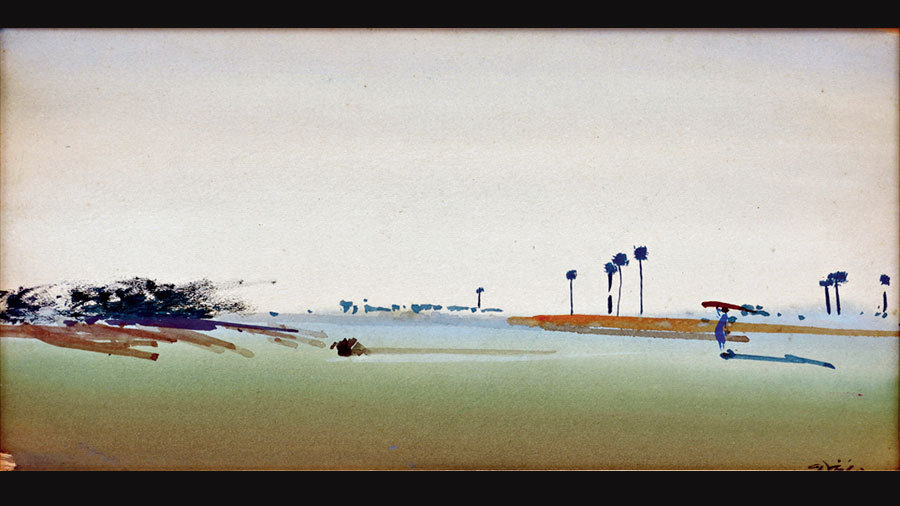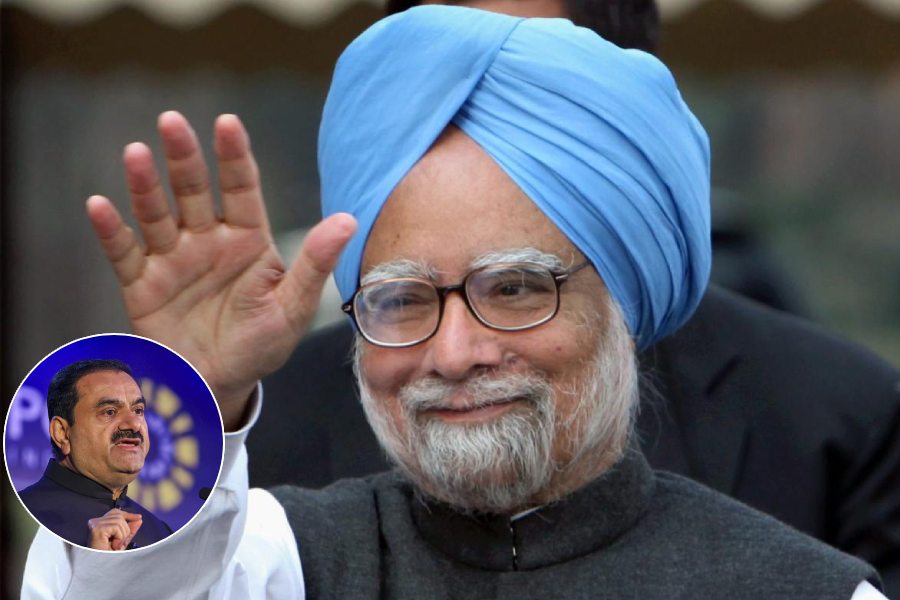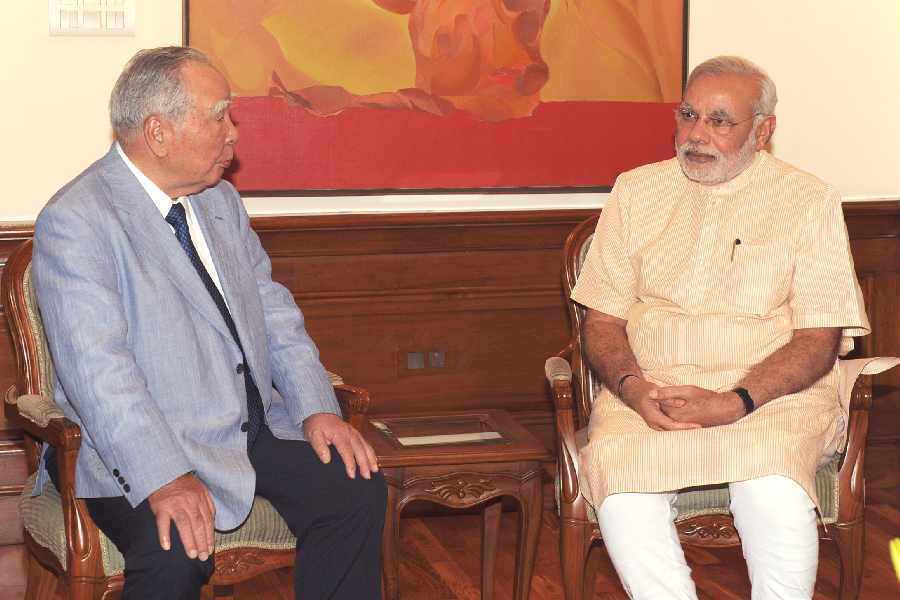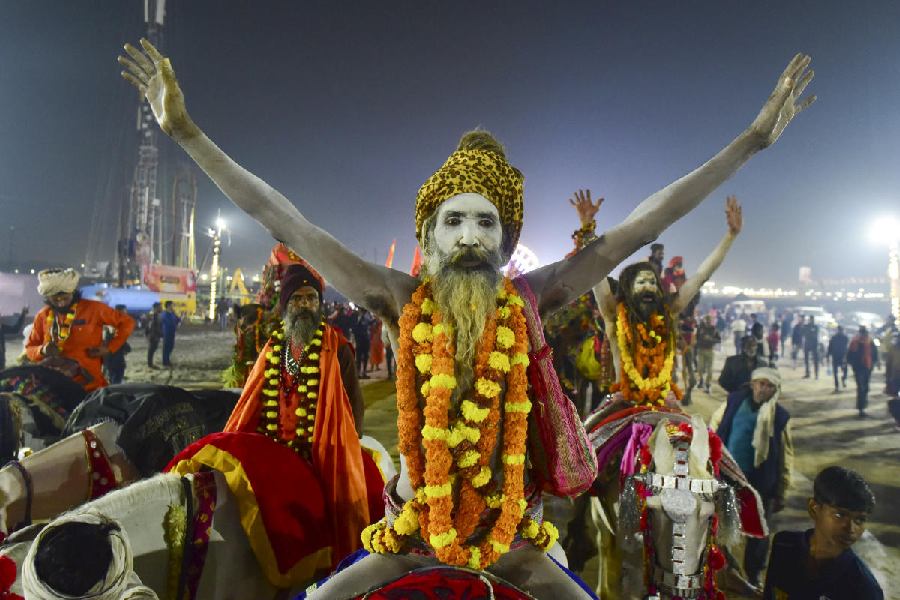Pretty, charming, light and airy. These adjectives succinctly describe the salient characteristics of the works of Narayan Shridhar Bendre (1910-1992). He had travelled widely all over the Indian subcontinent, from Kerala to Kashmir, Europe and the United States of America. Yet, in most of his works, he returned to the poor villages of India, far removed though they were from any sign of the degradation that abject poverty brought upon these down-and-out folk. The recent exhibition, NS Bendre: Drawings, Sketches, Watercolours, at the Kolkata Centre for Creativity reveals that for an artist brought up on the academism that prevailed in his time, his jottings with pen and ink testify to his precision and keenness of vision that allowed him to capture with exactitude and fidelity the graceful movements of village belles fetching water from wells, bent over fields or babies as they nurtured both with equal care, standing erect or in a brown study.
Bendre, a founder member of the influential Baroda Group of artists in 1956, was born in Indore. He was initially trained at the state art school in Indore. He received a government diploma in art from Bombay. As his paintings show, he was interested in the modernist movement and had become acquainted with some of the master works during his extensive travels. In various phases of his artistic career, he experimented with impressionism, pointillism, cubism and expressionism, his tastes having been moulded in the early years by the ‘quasi-modernist’ landscape painting of the Indore School. He did try to blend these trends with the Indian themes and portraits he painted but he remained faithful to his formalist training.
In 1945, he spent some time in Santiniketan as an artist in residence, where he met Nandalal Bose, Ramkinkar Baij and Benode Behari Mukherjee. In the US, he completed courses in graphic art and ceramics. Later, as head of the department of painting at University of Baroda, he was responsible for introducing a new programme which distinguishes this university.
The exhibits on display were clearly taken from his notebook (some with his Bombay address printed on them) which he used for sketching whatever he observed during his travels — a sort of aide-memoire for his paintings. Without the camouflage of paint, these drawings are more down to earth. “I belong to this earth. I walk on this earth. I eat on this earth, and I don’t think of anything but this earth. Things here are like a library to me,” Bendre had once written, and here we observe the true nature of his works, stripped of all veneer. About his preliminary sketches he wrote: “I don’t keep any records. Sketches help my paintings, so whenever I travel, I keep some paper in my bag for sketching. I make very small sketches, and these sketches are my gold mines.”
Bendre occasionally made hasty sketches of hutments with thatched roofs, the village temple, cattle and the carts used for transportation. Among mostly young and nubile women, he had sketched some middle-aged women with heavier bodies.
Bendre used the paintbrush with equal dexterity. With a few strokes, he conjured up wide open spaces with palm trees standing upright against the horizon. A lone human carrying a load on her head and with only her shadow for company crosses the green expanse. Nature in meditation.











